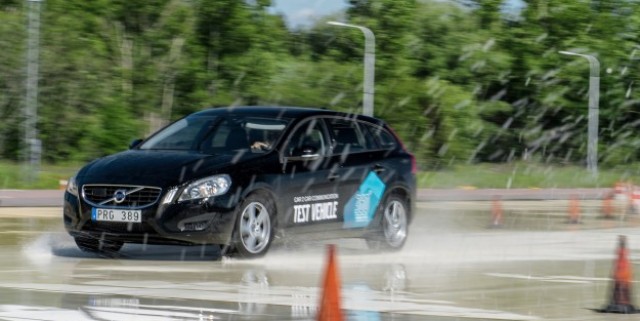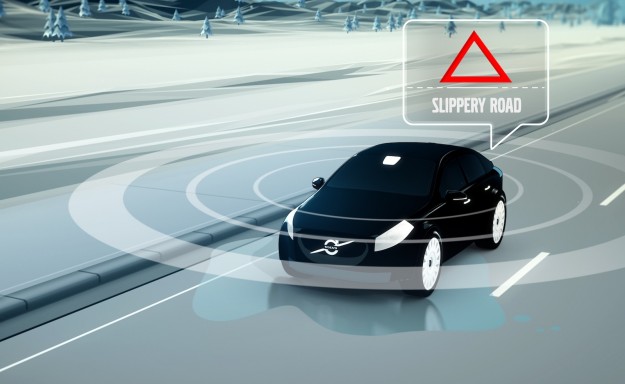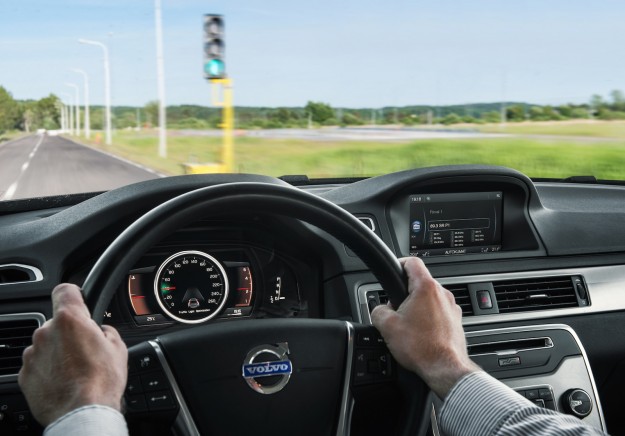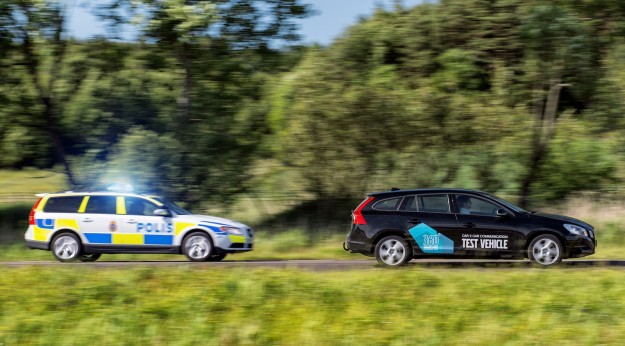
The roads and the cars on them are set to form an intelligent, connected network within three years when a number of the world’s leading vehicle manufacturers bring Car 2 Car (C2C) communication technology to the market.
C2C allows vehicles to interact with each other and the infrastructure around them, exchanging information on an almost endless list of circumstances limited by little more than the imagination.
Volvo this week showcased the first of its proposed C2C functions that are designed to boost a range of measures like safety, convenience and fuel consumption ahead of the technology’s introduction into production cars in 2016.
The Swedish manufacturer is part of a consortium comprising BMW, Daimler, Ford, Honda, PSA Peugeot Citroen, Renault, Volkswagen and others that is aiming to establish a standardised C2C system to smooth and accelerate its uptake and maximise its effectiveness.

Among Volvo’s proposed C2C applications is one that allows vehicles to receive warnings about hazardous weather and road conditions from other vehicles and the roads themselves. Volvo’s example sees a vehicle that encounters a slippery surface immediately transmit the information to other vehicles approaching the same section of road. The information is conveyed through visual and audible warnings in approaching vehicles, with the intention to alert other drivers to potential dangers.
The National Highway Traffic Safety Administration (NHTSA) in the US says six per cent of all car crashes and three per cent of all fatalities on the road occur in slippery conditions, highlighting the life-saving potential of the application.

An application combining data from vehicles and traffic lights can alert drivers who have not recognised a red light as well as warn other motorists approaching the same intersection that a vehicle is about to run the red.
The NHTSA says one in 10 road deaths in the US are the result of red-light violations, while the Insurance Institute for Highway Safety (IIHS) says half the people killed when someone runs a red are not the signal violators but innocent drivers and pedestrians.
Another application linked to traffic lights can inform drivers of the optimum approach speed to the next intersection to avoid unnecessarily having to come to a stop for a red light. Reducing unnecessary braking aids traffic flow and improves vehicles’ fuel economy.

Volvo has also developed a C2C application to warn drivers of nearby emergency vehicles, encouraging them to create a passage well in advance for emergency services to pass. The system would help overcome distraction caused by loud-playing music as well as allow emergency vehicles to use their sirens more sparingly at night out of consideration for nearby residents.
Other applications Volvo is developing for potential introduction from 2016 include warnings for slow or broken-down vehicles, road works and traffic jams; information about regular and temporary speed limits; and alerts to inform drivers when motorcyclists are nearby.





